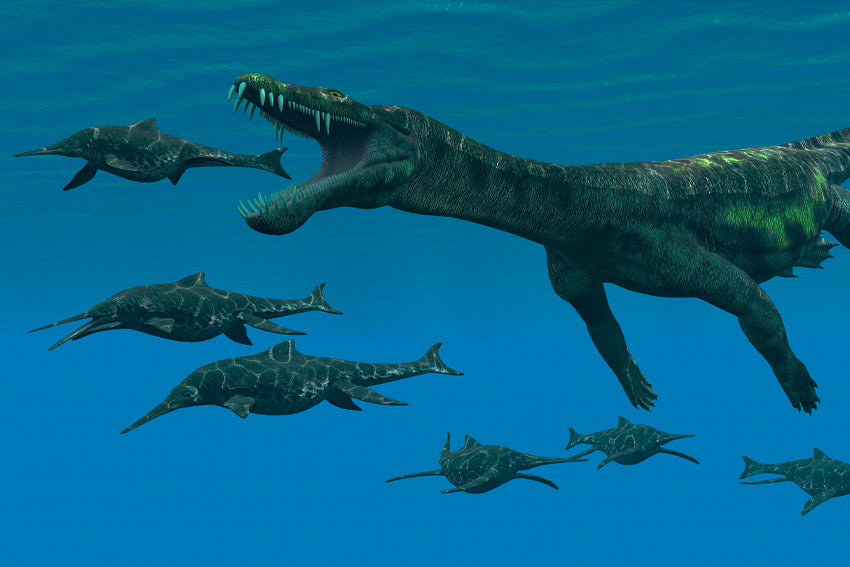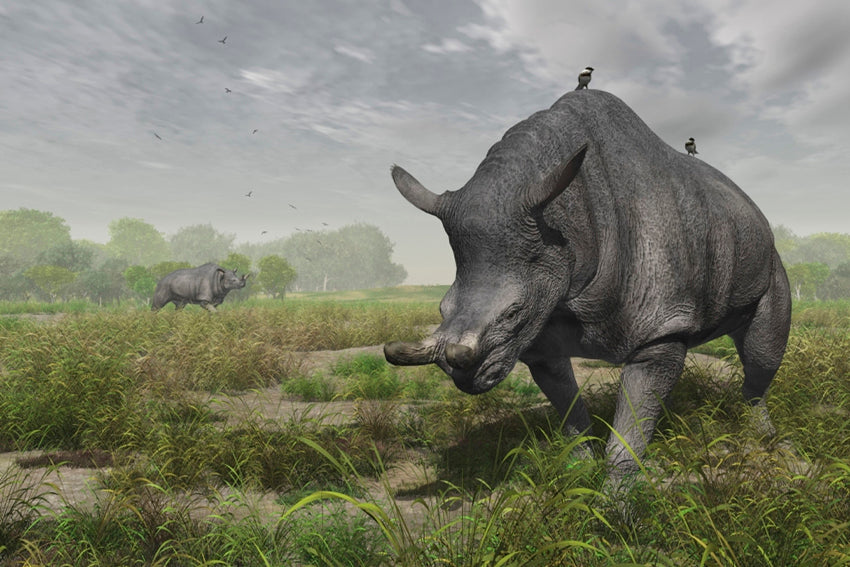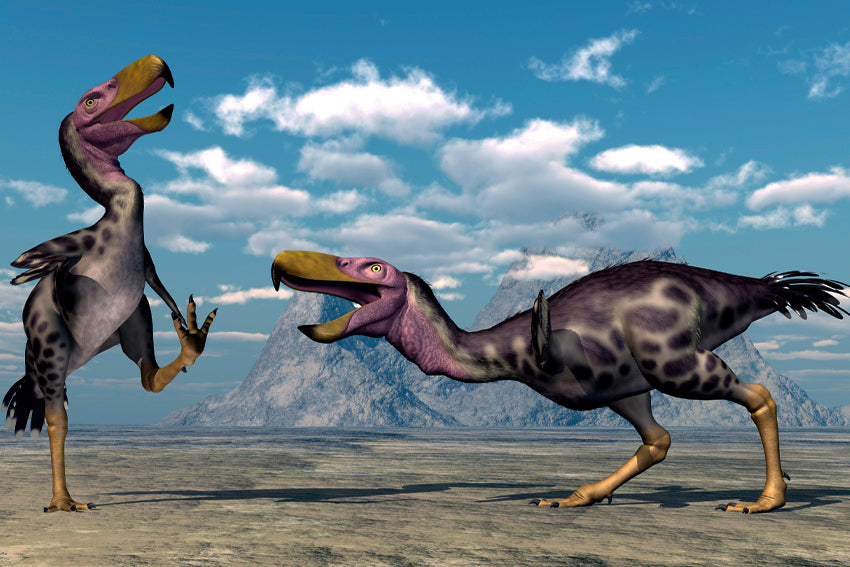The Triassic is the first of the three parts into which the Mesozoic era is divided. It covers from the end of the Permian (251 ± 0.4 million years ago) to the beginning of the Jurassic (199.6 ± 0.6 million years ago). Both its beginning and its end are marked by major extinction events.
During the Triassic, almost all the land masses on the planet were concentrated on a single supercontinent that sat roughly on the equator, called Pangea.
An extensive gulf that opened in its western part formed the Tethys Sea. The rest of the waters formed the ocean of Panthalassa.
At the end of the Triassic, the rupture movements that caused the fragmentation of Pangea began.
The climate during the Triassic was generally hot and dry. There is no evidence of ice ages even near the poles. Pangea's large size meant that its climate was strongly continental, with cold winters and very hot summers. We can divide the forms of life existing in the Triassic into three large groups: those that survived the great extinction at the end of the Permian, the new groups that emerged during the Triassic but did not survive the extinction that ended this period, and those others that They survived throughout the Mesozoic.
During the early Triassic, reptiles became the main land animals, and the diversification of dinosaurs occurred. The first mammals also appeared, although these were small and did not have a significant impact on the fauna of the period. Other creatures that lived during the Triassic include:
Plesiosaurs : Large aquatic reptiles with elongated bodies and long necks.
Pterosaurs: flying reptiles that resembled bats and ate mainly fish.
Therapsids: A diverse group of animals that included both the ancestors of mammals and sharp-toothed reptilian predators.
Rhynchosaurs : ancestors of modern crocodiles, with aquatic bodies and needle-like teeth.
Araeoscelidians: small terrestrial reptiles that fed on insects and other invertebrates.

In the final part of the Triassic, mammals arose from some type of cynodont reptile.
In the Triassic, plant life on Earth began to recover after the mass extinction that occurred at the end of the Permian period. There was a diversification of seed plants, including conifers and cycads, which were common in the forests of the time. Other plants that grew during the Triassic include:
Glossopteris : A group of ferns that was widespread on Earth and dominated forests for much of the period.
Bennettitales: Seed-bearing plants that resembled palm trees and grew in tropical environments.
Equisetopsidas: reed-shaped plants found in rivers and lakes.





Share:
Permian period
Jurassic period